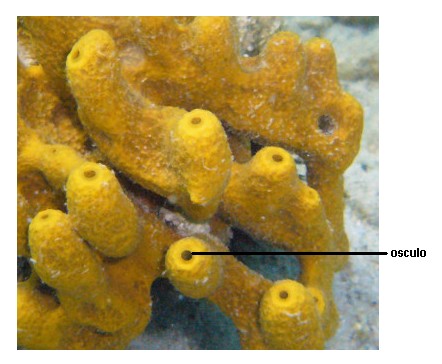osculum on:
[Wikipedia]
[Google]
[Amazon]
 The osculum (plural "oscula") is an excretory structure in the living
The osculum (plural "oscula") is an excretory structure in the living
 The osculum (plural "oscula") is an excretory structure in the living
The osculum (plural "oscula") is an excretory structure in the living sponge
Sponges, the members of the phylum Porifera (; meaning 'pore bearer'), are a basal animal clade as a sister of the diploblasts. They are multicellular organisms that have bodies full of pores and channels allowing water to circulate through t ...
, a large opening to the outside through which the current of water exits after passing through the spongocoel
A spongocoel (), also called paragaster (or paragastric cavity), is the large, central cavity of sponges. Water enters the spongocoel through hundreds of tiny pores ( ostia) and exits through the larger opening (osculum). Depending on the body pla ...
. Wastes diffuse into the water and the water is pumped through the osculum carrying away with it the sponge's wastes. Sponges pump large volumes of water: typically a volume of water equal to the sponge's body size is pumped every five seconds.
The size of the osculum is regulated by contractile myocyte
A muscle cell is also known as a myocyte when referring to either a cardiac muscle cell (cardiomyocyte), or a smooth muscle cell as these are both small cells. A skeletal muscle cell is long and threadlike with many nuclei and is called a muscl ...
s. Its size, in turn, is one of the factors which determines the amount of water flowing through the sponge
Sponges, the members of the phylum Porifera (; meaning 'pore bearer'), are a basal animal clade as a sister of the diploblasts. They are multicellular organisms that have bodies full of pores and channels allowing water to circulate through t ...
. It can be closed completely in response to excess silt in the water.
References
Sponge anatomy {{animal-anatomy-stub